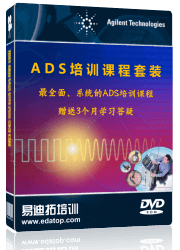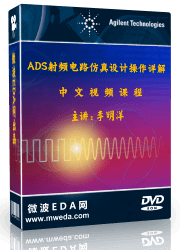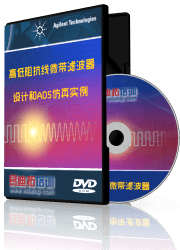- 易迪拓培训,专注于微波、射频、天线设计工程师的培养
ADS LNA NF simulation question.
录入:edatop.com 点击:
I got problem when I simulate the noise figure of my LNA design, I always get a unreasonable nf(1). Why? Is there something wrong in my simulation setup?
The above simulation result is the NF of an old CMOS LNA, you can see the nf(1) (or m2) is too large to be reasonable. The NF measurment result is around 3.8dB.
This is the simulation result of another LNA design, again the nf(1) is surprisingly large. This LNA, which has a very common structure, is shown below:
Summary of this LNA simulation result:
And the smith chart with NF and GA (available gain) circles is:
The definition of nf(k) in ADS is:
Noise Figure
The parameter nf(k) in the dataset is the noise figure at output port k. You can view results using the Data Display. The noise figure for each port will appear in the variables list as nf(1), nf(2), and so on. nf displays noise figures for all ports.
When noise figure is calculated at a port, the other ports in the network are terminated in their respective impedances.
For a 2-port circuit, the noise figure is the signal-to-noise ratio at the input, divided by the signal-to-noise ratio at the output. It has default units of dB. For a circuit with more than two ports, the noise figure is the ratio of the total noise at the output port to the transmitted input noise. The total noise is the transmitted input noise plus the noise contributed by the network. The transmitted input noise represents the portion of the incident thermal noise (kTB, where k=Boltzmann's constant, 1.381...x10-23 J/K, T=290 K, B=1 Hz) which passes through the system.

The above simulation result is the NF of an old CMOS LNA, you can see the nf(1) (or m2) is too large to be reasonable. The NF measurment result is around 3.8dB.

This is the simulation result of another LNA design, again the nf(1) is surprisingly large. This LNA, which has a very common structure, is shown below:

Summary of this LNA simulation result:

And the smith chart with NF and GA (available gain) circles is:

The definition of nf(k) in ADS is:
Noise Figure
The parameter nf(k) in the dataset is the noise figure at output port k. You can view results using the Data Display. The noise figure for each port will appear in the variables list as nf(1), nf(2), and so on. nf displays noise figures for all ports.
When noise figure is calculated at a port, the other ports in the network are terminated in their respective impedances.
For a 2-port circuit, the noise figure is the signal-to-noise ratio at the input, divided by the signal-to-noise ratio at the output. It has default units of dB. For a circuit with more than two ports, the noise figure is the ratio of the total noise at the output port to the transmitted input noise. The total noise is the transmitted input noise plus the noise contributed by the network. The transmitted input noise represents the portion of the incident thermal noise (kTB, where k=Boltzmann's constant, 1.381...x10-23 J/K, T=290 K, B=1 Hz) which passes through the system.
申明:网友回复良莠不齐,仅供参考。如需专业帮助,请学习易迪拓培训专家讲授的ADS视频培训课程。
上一篇:ads gds2
下一篇:Regarding ADS
ADS娑擃厽鏋冪憴鍡涱暥閸╃顔勯弫娆戔柤 | More...
ADS培训课程推荐详情>>
 国内最全面、最专业的Agilent ADS培训课程,可以帮助您从零开始,全面系统学习ADS设计应用【More..】
国内最全面、最专业的Agilent ADS培训课程,可以帮助您从零开始,全面系统学习ADS设计应用【More..】
- Agilent ADS教学培训课程套装
- 两周学会ADS2011、ADS2013视频教程
- ADS2012、ADS2013射频电路设计详解
- ADS高低阻抗线微带滤波器设计培训教程
- ADS混频器仿真分析实例视频培训课程
- ADS Momentum电磁仿真设计视频课程
- ADS射频电路与通信系统设计高级培训
- ADS Layout和电磁仿真设计培训视频
- ADS Workspace and Simulators Training Course
- ADS Circuit Simulation Training Course
- ADS Layout and EM Simulation Training Course
- Agilent ADS 内部原版培训教材合集








